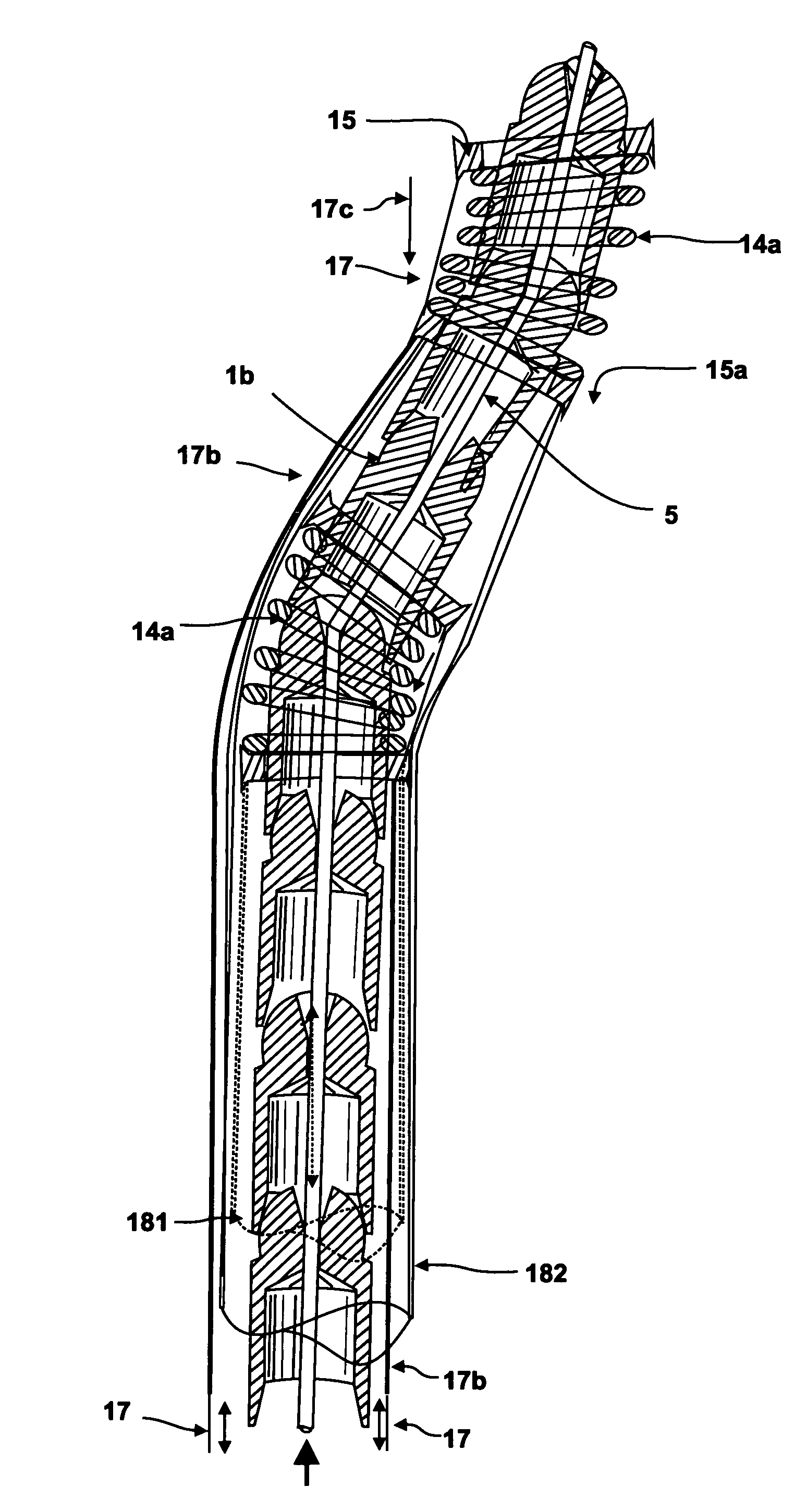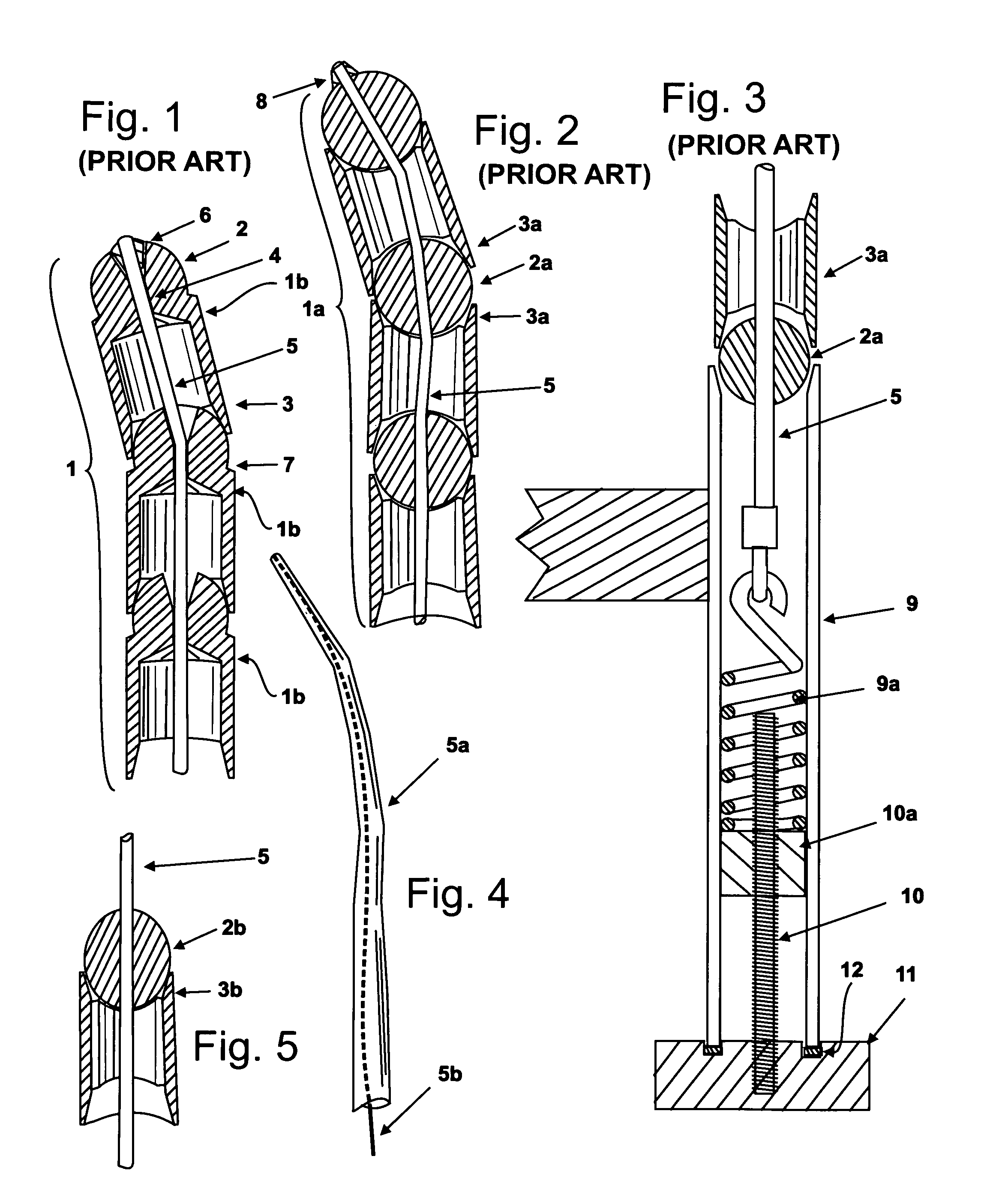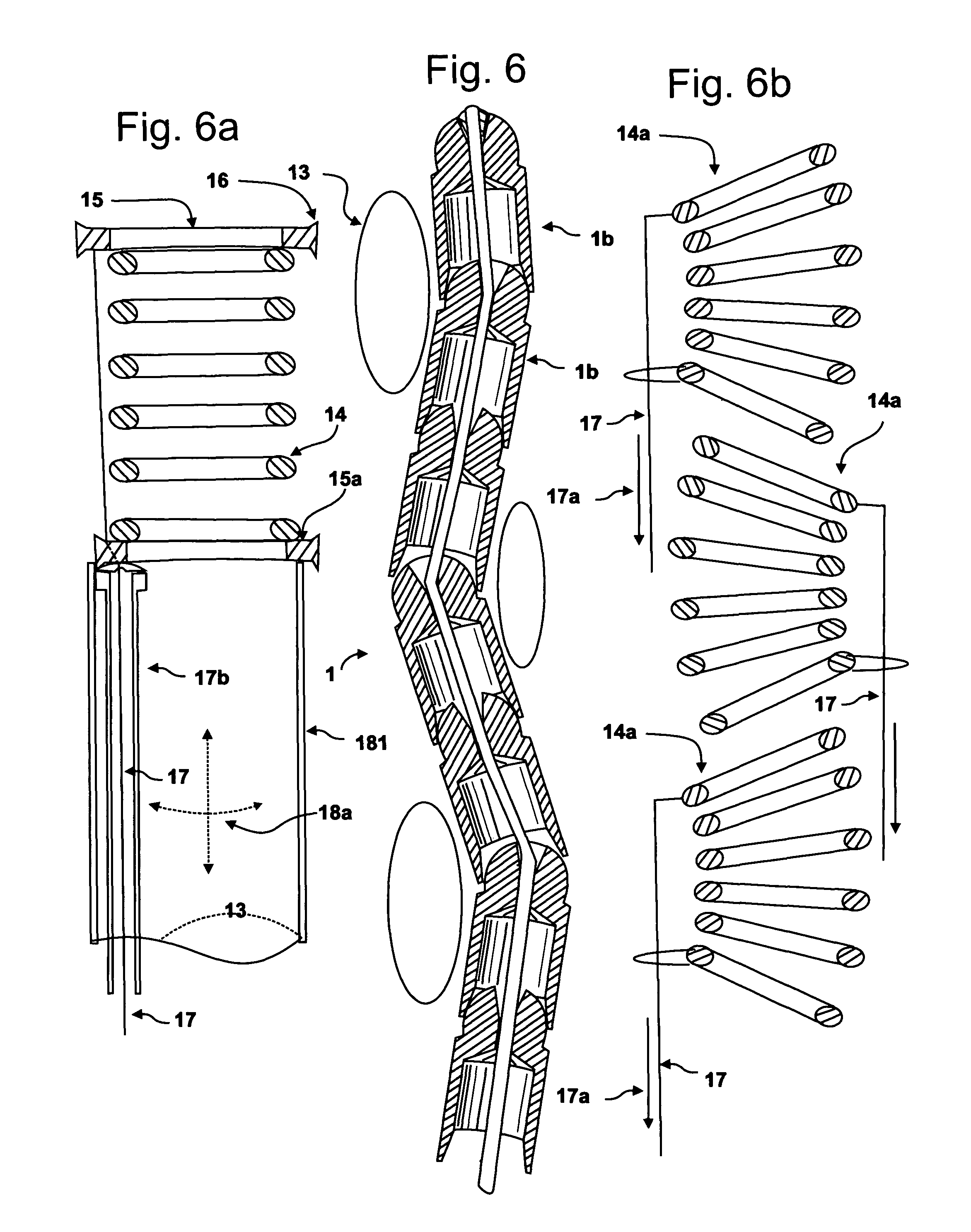[0018]It is an object of this invention to provide an improved articulable column construction that overcomes the difficulties of column sag and adjustment.
[0019]It is also an object of this invention to provide a method and device that controls the shape of the articulable member, thereby providing a tool platform which can be directed down a tortuous passage, and return, without injury to the device or the body in which it is placed.
[0020]To accomplish this it is an object of this invention to provide a method for making the articulable column sufficiently stiff by introducing a springing member to the centre of the column in place of or in addition to the cable, which conventional articulable columns rely on. This springing member / compressing member 5a may have, but need not have, a variable modulus from one end to the other, for example, high modulus on the proximal end and lower modulus on the distal end, resulting in a column that will have stiff proximal or base joints where acting forces are large and (2) are relatively flexible at joints near the distal or free end where acting forces are smaller. This allows columns to be built which are slender, articulable, structural members which can support large free end loads, and / or long column lengths. Columns built with this method also can be articulated in a natural, effective fashion. It also allows the articulable column to be relatively flexible, prior to complete compression, which allows it to be shaped, yet, remain relatively straight in those sections that are not shaped. The springing member / compressing member 5a also gives the articulable column, and robotic arm, a biased shape, usually straight, so that the column returns to the biased shape once it has passed through the shaper. In some preferred embodiments the springing member / compressing member 5a is responsible for all or virtually all of the biased shape, while in other preferred embodiments, the biased shape is supplemented by the contribution of other components of the arm, such as the communicating tubes 181, 182. In other embodiments of the invention these said other components are designed to act as the sole springing element in which event a compression cable, referred to as a compressing member 5 will be required. The springing member / compressing member 5a may be made of any materials and designs, well known to the art. For example, it might be made of stainless steel or superlastic nickel-titanium and be solid or tubular, or of any suitable cross-section, or be a coiled spring. In some preferred embodiments, the compressing member 5 may also be used exclusively or in combination with cables or other members to put the segments of the articulable column into compression, thereby making it more rigid. In other preferred embodiments, the springing member / compressing member 5a is used solely to provide a springing support to the articulable column, leaving the compression of the segments comprising the said column to other members, such as compressing member 5b, which in some preferred embodiments are contained within the lumen of the springing element. It should be noted that since the springing member / compressing member 5a may also act as a compressing member, it is sometimes referred to as a compressing member.
[0024]The present invention includes a selected number of shapers which can be moved up and down the articulable column and rotated around it. As the arm advances or exits the body, the shapers are given a suitable shape and location on the column to avoid the obstruction, and then set in that position, relative to the body, allowing the relatively flexible articulable column and outer skin to assume the shape of the shaper continuously as they advance and exit, over and / or within the shapers. As they exit the shaper, they return to their biased shape (usually straight) and advance until the next shaper is deployed, which in turn guides them through the next curvaceous turn. Thus, the arm self-computes the cascade of movements. The arm then operates in two modes, the first, a low energy mode in which the arm flexes easily, and responds to the shaper's directional changes; second, when the site is reached, a high energy mode, when the segments of the column are put into compression, creating a rigid member of the required shape, that can stably support the tools at the distal end of the arm and exert the necessary force to execute the work.
[0036]The articulable column is transformable from a low energy state in which said joints are freely movable so as to produce bending in said column, and a high energy state in which at least one of said joints is compressed so as to constrain its movement and thereby increase rigidity in the column along at least part of its length.
[0039]The compression control mechanism controls rigidity of said articulable column, wherein said compression control mechanism selectively actuates one or more of said compression elements so as to reversibly and controllably produce compression in at least one of said joints.
 Login to View More
Login to View More  Login to View More
Login to View More 


